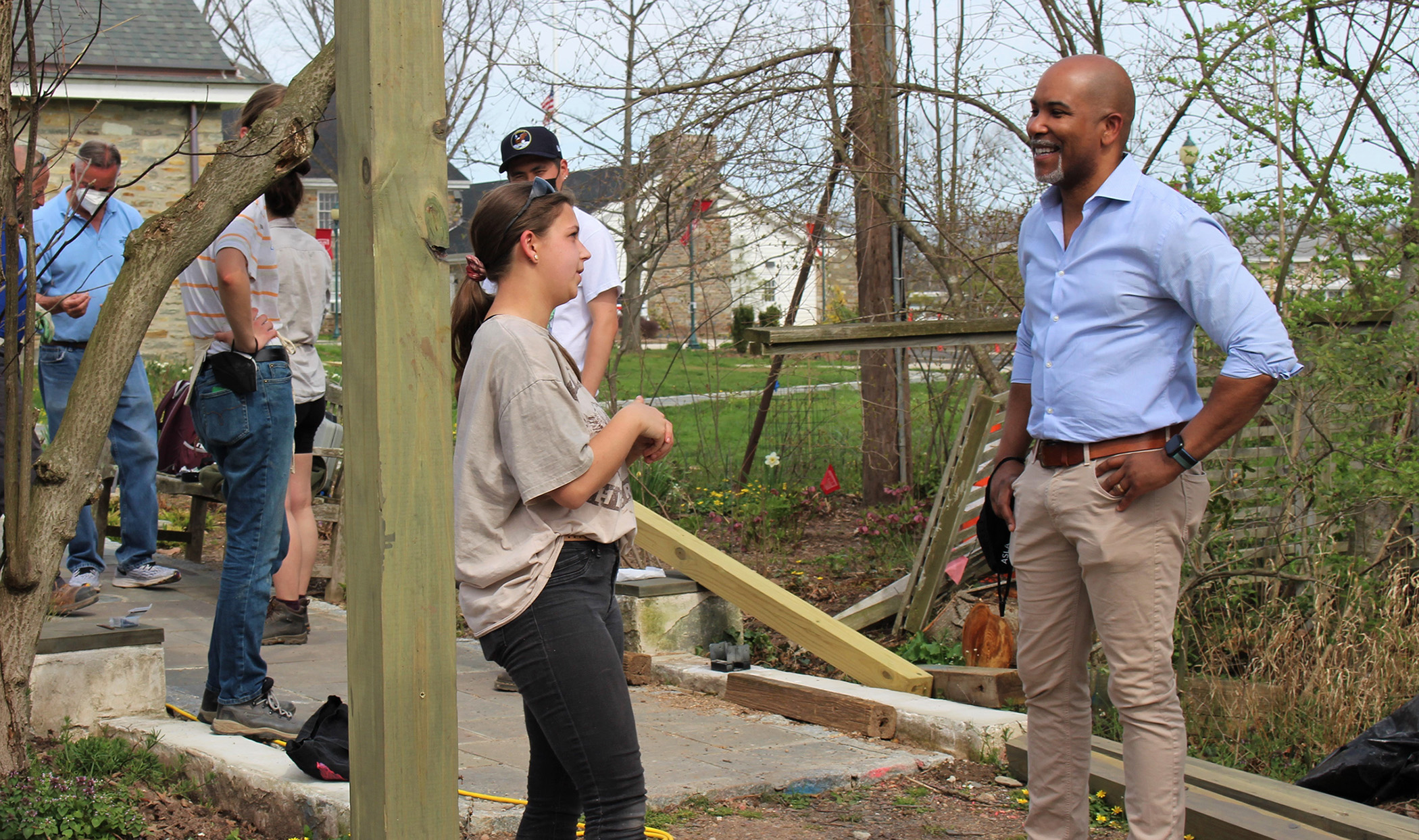What is it that spurs students to pursue careers in landscape architecture today?
According to Torey Carter-Conneen, Chief Executive Officer of the American Society of Landscape Architects (ASLA), students “continue to be inspired by design.”
“As travel has opened up, I have had the opportunity to visit a number of landscape architecture programs and I always ask students this very question. Their answers vary, but there are a few that I hear more often,” said Carter-Conneen, who recently visited Temple University Ambler and the Landscape Architecture program offered by the Tyler School of Art and Architecture. “Students want to create innovative and beautiful spaces for all people to enjoy and they also want to solve some big societal challenges like climate change, systemic inequality and public health. Landscape architects are essential to building and rebuilding communities for current and future climate impact and they have a unique ability to design public spaces that bring communities together.”
The ASLA reached out to Tyler’s Landscape Architecture program inquiring about “our interest in having ASLA leadership visit and interact with student leadership,” said Rob Kuper, Associate Professor and Program Head of Landscape Architecture and Horticulture in the Tyler School of Art and Architecture.
“The goal was to have students interact with Torey and hear about the future of the ASLA. Our programs emphasize horticulture, design-build and ecological restoration; Torey's visit to our studios allowed him to see this firsthand,” he said. “Torey had lunch with the most active members of our ASLA student chapter and SER (Society for Ecological Restoration), then toured each Bachelor of Science Landscape Architecture (BSLA) and Master of Landscape Architecture (MLArch) design studio. He then ended the day with a presentation related to ASLA's 10-year vision.”
According to Carter-Conneen, “meeting the future leaders of the profession is the most inspiring part of my work.”
“The students were incredibly generous with their time. I met with students in their first, second and third year of the Master of Landscape Architecture program and visited the junior and senior design studios,” he said. “There were opportunities to sit with the students and hear them talk about their projects and I had a chance to ask questions and learn more about the problems they were solving through their design. I hope the students made a personal connection and that they engage with ASLA to help move us forward and make good on our purpose and mission.”
The ASLA connects students to a national network of landscape architects “in addition to providing resources, educational opportunities and recognition for the work and research that they do,” said Temple Master of Landscape Architecture student Sam Emory.
“Torey’s visit to Temple Ambler affirmed ASLA National’s interest and investment in future landscape architects across the country,” said Emory who is co-president of Temple’s student chapter of the American Society of Landscape Architects. “It was great to have national leadership visit campus and talk about how the organization is changing to address concerns which resonate with students today: social equity, climate change, and community connection to landscape.”
Carter-Conneen joined the ASLA as CEO in August 2020.
“The importance of the organization continues to be grounded in its original purpose — increasing the efficiency and influence of the profession, fostering good fellowship among its members and promoting the public welfare,” he said. “Our mission today is to empower our members to design a sustainable and equitable world through landscape architecture and to invest in global, social and environmental change through the art and science of landscape architecture.”
Carter-Conneen said he hopes students see the ASLA as a partner and resource to them “now and as they move into their professional lives.”
“I hope it’s also useful to them to hear what other students in different programs across the country are doing and sharing with me and how the challenges we face as a society are similar but vary regionally. One of the pillars of our recently board-approved strategic plan is connections,” he said. “Institutions like Temple are not only providing students the education they need to become landscape architects, they can also introduce students to ASLA early in their academic program. ASLA is a professional association but there are many opportunities for students to engage with the organization.”
At the ASLA annual conference in 2021, Carter-Conneen said, “we had more than 700 students attend.”
“We also have a mentorship program where students can be directly connected to members in practice to help them prepare to enter the profession,” he said. “The student-led LABash Conference also provides a chance for students to connect, learn and develop friendships that will last for years into their careers.”
Kuper sees current landscape architect students as future agents of positive change.
“Through ASLA, as I see it, they can interact with other landscape architects and change the attitudes, behaviors, and professional knowledge in response to the climate crisis — which are deeply ingrained and appear resistant to change — for the future,” he said. “Student participation now will also hopefully ensure their future participation and voice in ASLA.”
Emory said he hopes students “realize that ASLA is an organization that welcomes their involvement and input.”
“There are opportunities for students to speak up and folks who want to listen to what we have to say. Students today will shape the profession of tomorrow, and their current priorities can become future policies if they get involved,” he said. “There are opportunities for this at many levels, including school chapters, regional chapters such as the PA-DE ASLA, and at the national scale.”

